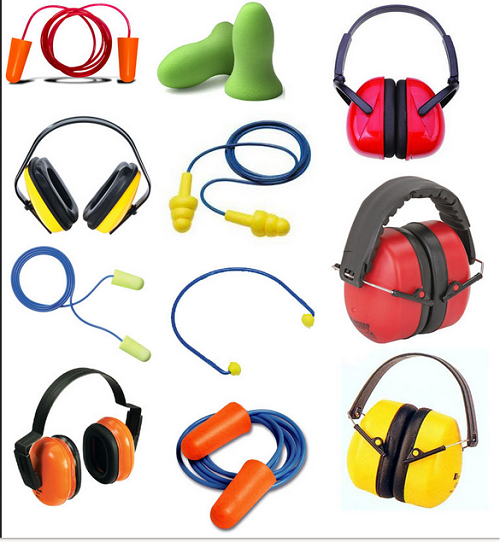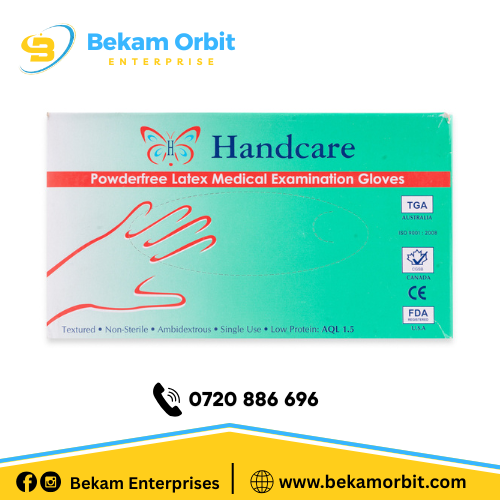Category
- Uncategorized
- Fire Safety
- PPES
- Safety Boots & Gumboots Supplier In Nairobi Kenya
- Security Uniforms
- Tools & Signages
- Uniforms
Product categories
- Fire Safety
- PPES
- Beekeeping equipment
- Body protection
- Eye protection
- Fall protection
- Hand protection
- Head protection
- Healthcare Uniforms
- Hearing protection
- Hotel and Hospitality Uniforms
- Respiratory protection
- Rider gears and Raincoats
- Safety Boots & Gumboots Supplier In Nairobi Kenya
- Security Uniforms
- Tools & Signages
- Uncategorized
- Uniforms

Hearing Protection at Work: Ear Muffs and Ear Plugs Guide
In today’s industrial, construction, and manufacturing settings, hearing protection at work is not optional — it’s a critical health and safety requirement. From the constant drone of heavy machinery to sudden blasts from power tools, workers are exposed daily to noise levels that can cause irreversible noise-induced hearing loss (NIHL) if not controlled with the right hearing protection equipment.
This comprehensive guide explains why hearing protection is essential, compares ear muffs to earplugs, highlights certified brands such as 3M, JSP, PPEPLUS, and Vaultex Earmuffs, and offers practical advice on selecting, fitting, and maintaining them.
Why Hearing Protection at Work Matters
Noise-induced hearing loss (NIHL) is a permanent condition caused by damage to the sensitive hair cells inside the ear. Once destroyed, these cells do not regenerate. This means that without effective PPE hearing protection, workers risk lifelong impairment that can reduce their ability to communicate, increase feelings of isolation, and lead to higher workplace accident rates due to missed alarms or spoken warnings.
Did you know?
- Exposure to 85 dB for more than 8 hours can cause damage. This is equivalent to busy city traffic.
- At 100 dB, like the noise from a chainsaw, damage can occur in just 15 minutes.
- 140 dB, such as a gunshot or fireworks, can cause immediate and permanent hearing loss.
Typical Noise Levels in Kenyan Workplaces
- Construction Sites: 80–120 dB, depending on tools used.
- Factories: 70–110 dB, with some machines exceeding safe levels.
- Airports: Tarmac noise can reach 130 dB during take-off and landing.
Employers and safety officers in Kenya are required to provide suitable industrial ear muffs or foam earplugs to protect staff and meet safety standards.
Understanding Ear Muffs and Ear Plugs

✅ Ear Muffs: Complete Outer Ear Protection
Ear muffs are designed to cover the entire outer ear, creating a seal that blocks noise. They consist of two cushioned cups connected by an adjustable headband.
Pros:
- Easy to see from a distance — promotes safety compliance.
- Comfortable for long-term use, especially in cooler conditions.
- Durable and reusable — lower long-term cost.
- Advanced models (like electronic earmuffs) allow ambient sound for better communication.
Cons:
- Bulkier than earplugs; may interfere with helmets or visors.
- Can cause sweating in hot conditions.
- Higher upfront cost than disposable plugs.
Popular options stocked by us:
Vaultex Earmuffs
- 3M Optime™ 98 Earmuffs — Stainless steel headband resists bending; NRR 25 dB.
- Vaultex Earmuffs — Lightweight with ABS shell, stainless steel band, PU + foam cups, SNR 34 dB, NRR 28 dB. CE 352 and ANSI certified.
- JSP Sonis 3 Ear Defenders — High protection (SNR 37 dB) with large cups and soft cushions; suitable for quarrying, high-pressure steaming, and aviation. See details on JSP.
- PPEPLUS Earmuffs — Adjustable, foldable, Class 5 32.5 dB protection.
✅ Ear Plugs: In-Ear Noise Blocking
![]()
Earplugs are inserted into the ear canal, forming a barrier that blocks harmful sound waves. They come in foam, silicone, or custom-moulded materials.
Pros:
- Small, lightweight, and pocket-friendly.
- Highly compatible with other PPE (hard hats, goggles).
- Disposable types maintain hygiene in dirty environments.
- Budget-friendly for large teams.
Cons:
- Requires proper insertion to work effectively.
- Some workers find them uncomfortable for long shifts.
- Reusable plugs need regular cleaning.
Ear Plugs We Stock:
- 3M 1271 Ear Plugs — Corded, reusable, ergonomic design, 25 dB noise reduction.
- JSP Yellow Reusable Corded Ear Plugs — Easy insertion, washable, SNR 26 dB.
- Foam Disposable Ear Plugs: Soft PU foam, slow rebound, CE EN352 certified, SNR 31 dB — ideal for construction sites, shooting ranges, and travel.
How to Choose the Right Hearing Protection
Selecting the best hearing protection at work involves several factors:
✅ Noise Level: Match the device’s SNR (Single Number Rating) or NRR (Noise Reduction Rating) to the dB levels measured in your work area.
✅ Comfort: Well-cushioned ear muffs and custom-moulded earplugs provide better long-term wear comfort.
✅ Compatibility: Ensure your hearing protectors work with other gear like helmets, face shields, or safety glasses.
✅ Work Environment: For dusty or oily conditions, disposable earplugs help maintain hygiene and prevent contamination. For intermittent noise, earmuffs are a more practical solution.
✅ Communication: Electronic ear muffs with built-in microphones allow you to hear instructions and alarms without removing your protection.
Combining Ear Muffs and Ear Plugs for Extreme Noise
In extremely loud environments — like quarries, blasting sites, or heavy aviation maintenance — doubling up with ear muffs and earplugs provides maximum safety. For example, pairing Vaultex Earmuffs with soft foam earplugs can significantly lower exposure, ensuring workers stay within safe hearing thresholds even at noise peaks above 100 dB.
Proper Fitting and Maintenance Tips
For Ear Muffs:
- Adjust the headband so that the cups seal snugly around the ears.
- Replace worn-out cushions for consistent protection.
- Clean regularly with mild soap; store in a cool, dry place.
For Ear Plugs:
- Roll the foam plugs tightly, insert them deeply, and hold until they are fully expanded.
- Wash reusable plugs with warm water and mild soap.
- Discard disposable plugs after each use to avoid infection.
Compliance with Standards
All our hearing protection devices comply with CE EN352, ANSI, and other recognized standards. Using certified brands like 3M, JSP, PPEPLUS, and Vaultex Earmuffs ensures you meet local occupational safety laws and safeguard your workforce.
FAQs on Hearing Protection at Work
Q: How often should I replace my ear muffs?
A: Inspect them monthly. Replace the ear cushions every 6 months if used daily, or sooner if they become damaged.
Q: Can I clean foam earplugs?
A: No. Foam earplugs are designed for single use only. Dispose of them after each shift.
Q: Should I wear both ear muffs and earplugs?
A: Yes, in very noisy jobs (over 100 dB), combining both is recommended.
Conclusion: Protect Your Ears, Protect Your Team
Noise-induced hearing loss is permanent, but preventable. Using the right hearing protection equipment, such as industrial ear muffs or foam earplugs, ensures that every worker stays safe, productive, and healthy.
Explore our certified range of 3M Ear Muffs Nairobi, Vaultex Earmuffs, JSP Ear Defenders Kenya, and more on our dedicated Hearing Protection page.
Protect your hearing today — your future self will thank you!
Written by Bekamorbit
Best offers
Join Risk Free
30 days refund
100% Safe
Secure Shopping
24x7 Support
Online 24 hours
Best Offers
Grab Now
Fast Delivery
Get Your Products Delivery Intime
Store Blog



Featured Products
-
 wall-mounted with 1000 ml bottles emergency eye wash station
KSh9,000.00
wall-mounted with 1000 ml bottles emergency eye wash station
KSh9,000.00 -
 9-Gallon Gravity-Flow Portable Eye Wash Station
KSh17,000.00
9-Gallon Gravity-Flow Portable Eye Wash Station
KSh17,000.00 -
 Lab Safety Goggles
KSh400.00
Lab Safety Goggles
KSh400.00 -
 Over Glasses Safety Goggles
KSh700.00
Over Glasses Safety Goggles
KSh700.00 -
 Safety Noise Cancelling Earmuffs
KSh1,300.00
Safety Noise Cancelling Earmuffs
KSh1,300.00 -
 Askari Security Boots
KSh1,800.00
Askari Security Boots
KSh1,800.00 -
 White light duty gumboots
KSh800.00
White light duty gumboots
KSh800.00 -
 Ace Duma Safety Shoes
KSh3,100.00
Ace Duma Safety Shoes
KSh3,100.00















Leave a Reply